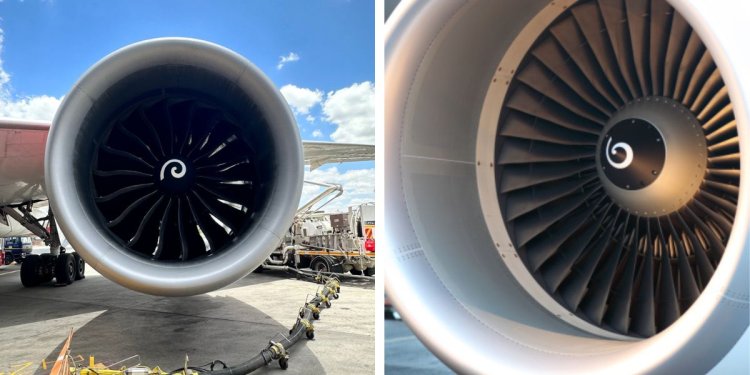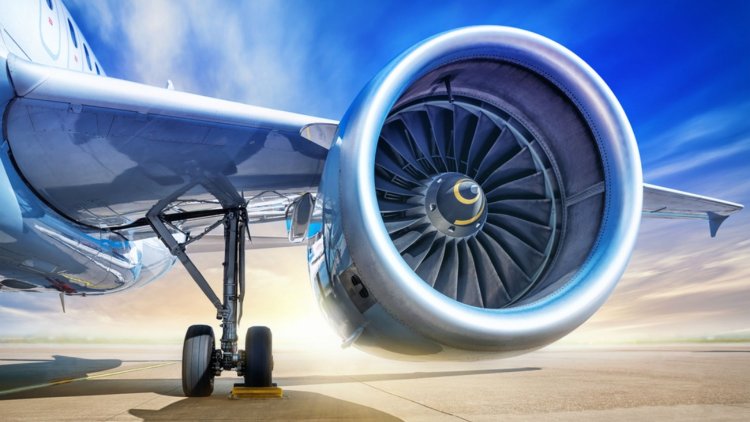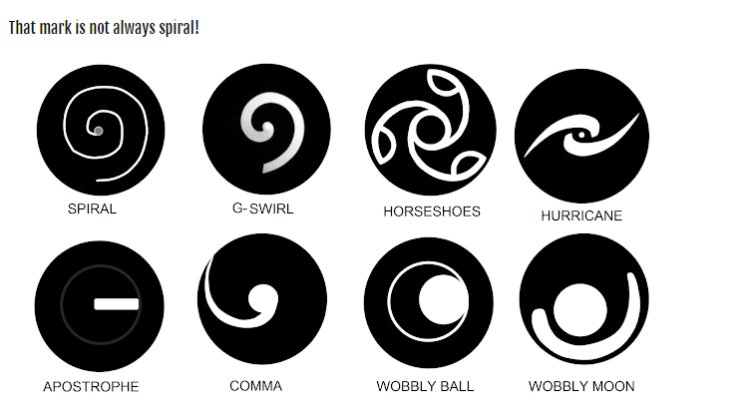What The White Markings At The Centre Of Aircraft Engines Do
The spiral markings aren't just there for passengers boarding the aircraft to admire

For those who don't use tunnels to board an aircraft, you might have come across some white marking at the centre of an aircraft engine that spins any time an engine is running.
Many might think that the marking makes the engine look attractive, just like the alloy rims in a car. Though from the naked eye, the spiral does add to the good looks of even the aircraft as a whole, that marking serves other functions, most of them dealing with the general safety of the aircraft.
Viral Tea takes a look at the functions of the spiral markings, otherwise called nosecone spirals, spinner spirals, spinner swirls, or nosecone swirls:

An image of an aircraft engine. /FILE
Visibility For Ground Crew
The spiral markings aren't just there for passengers boarding the aircraft to admire, they serve as visual alerts for ground crew working on the aircraft, despite the fact that a running engine is very loud.
It is actually very dangerous to work near a running engine as the sheer power of aircraft engines has the capability of sucking someone inside.
"The spiral has a fairly straightforward function, alerting ground staff to a running engine and ensuring that no one comes too close to it. If an engine is running, you see a white blur or a hypnotizing swirl, depending on the rotation speed of the engine.
"This visual cue is extremely clear and warns everyone on the apron to stay away from the huge jet engines," KLM's Renee Penris explained in a blog post.
Ground staff cannot hear the deafening roar of a running jet engine, or several engines running at once on an airport apron as they wear hearing protection.
In addition, just like the blades on a window fan, engine fan blades become translucent when they are spinning, especially in the dark. The spirals thus give an indication of which direction the fan blades are spinning.
Do They Prevent Bird Strikes?
There have also been questions about whether or not the white markings scare away birds, especially when the aircraft is in flight.
Bird ingestion into aircraft is a dangerous and expensive problem. At worst, these can lead to crashes, but these are fortunately rare.
More commonly, they lead to diversions or emergency landings. While few strikes directly lead to aircraft accidents, the estimated annual cost of damage from these, according to the University of Nebraska, is $400 million (Ksh49.4 billion) in the US, and $1.2 billion (Ksh148.1 billion) worldwide.
"In-flight these swirls flicker as the engine rotates at high speed, scaring birds and allowing them to fly clear of the engine," Rolls-Royce explained in their centenary press release one of the purposes of the spirals in their spinners.
But an article from Boeing's Aero Magazine, which was co-written by a researcher and pilot, begged to disagree as they debunked the 'Common Misconceptions About Bird Strikes'.
Essentially, the birds tend to steer clear of aeroplanes because of aerodynamic and engine noise. Therefore, they avoid planes in general before even seeing the 'flickering' spirals on the engines.
KLM's Penris concluded in the aviation company's blog that the spirals' purpose to repel birds from being struck by the engine is not scientifically proven.
"Boeing and Rolls-Royce, for example, say the spiral does not prevent birds from flying into the engine, as the rotation would be too fast for the birds to see the spiral. Other studies have suggested painting spiral shapes on the spinner cones does help prevent bird strikes.
"I guess the answer to this question can only be “maybe”, at this point. If only we could ask a bird," Penris stated.

Different designs of white markings on aircraft engines. /AIRCRAFT NERDS






